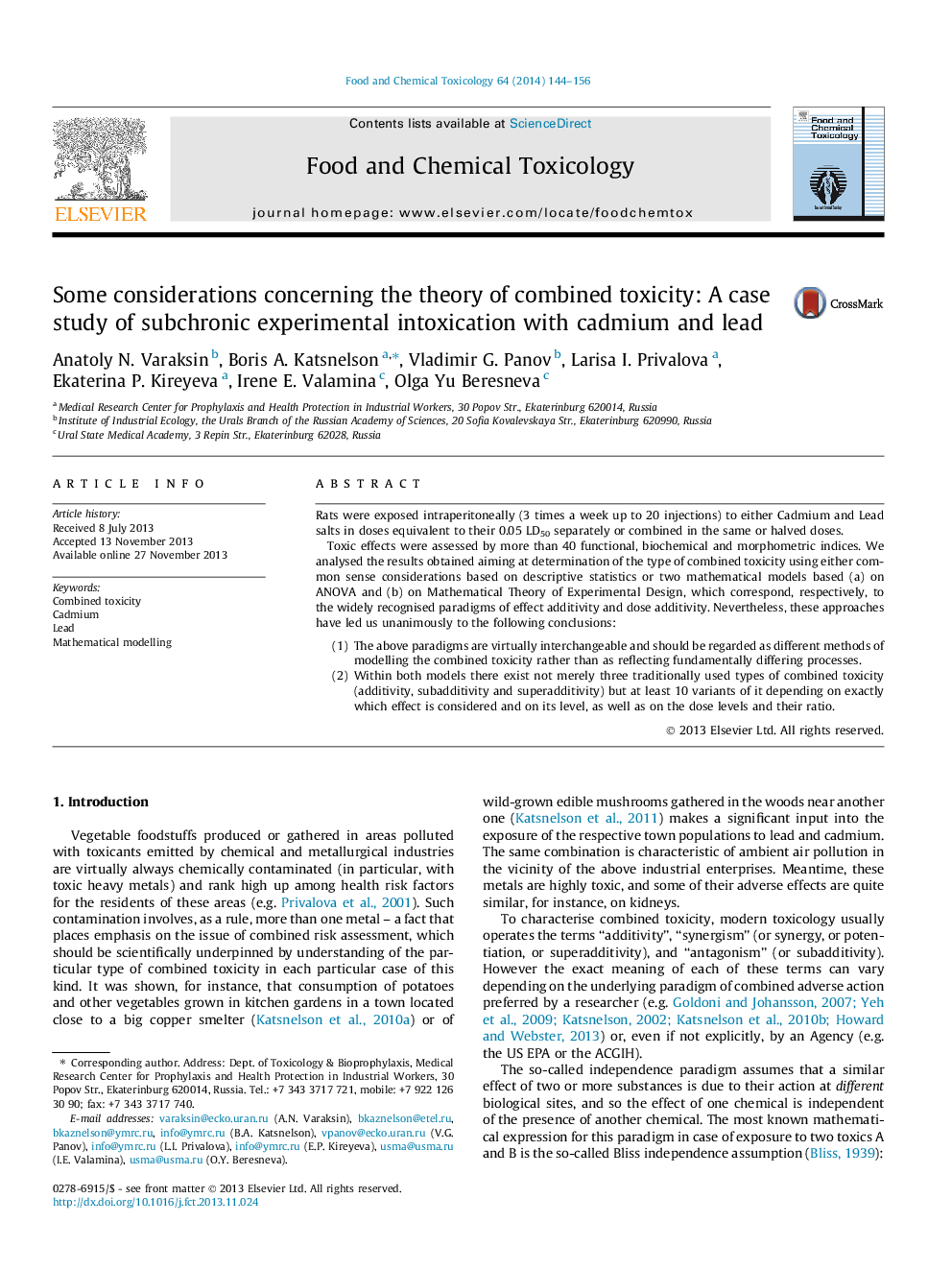| Article ID | Journal | Published Year | Pages | File Type |
|---|---|---|---|---|
| 5850880 | Food and Chemical Toxicology | 2014 | 13 Pages |
â¢Effects of repeated i.p. injections of Cd, Pb or Cd + Pb in doses isoeffective in relation to LD50 were studied on rats.â¢Analysis of results with either ANOVA or the Theory of Experimental Design gave similar assessments of combined toxicity.â¢Thus paradigms of effect or dose additivity can be regarded as different ways of modelling the basically same phenomenon.â¢The type of combined toxicity depends on which effect is considered as well as on the dose levels and their ratio.
Rats were exposed intraperitoneally (3 times a week up to 20 injections) to either Cadmium and Lead salts in doses equivalent to their 0.05 LD50 separately or combined in the same or halved doses.Toxic effects were assessed by more than 40 functional, biochemical and morphometric indices. We analysed the results obtained aiming at determination of the type of combined toxicity using either common sense considerations based on descriptive statistics or two mathematical models based (a) on ANOVA and (b) on Mathematical Theory of Experimental Design, which correspond, respectively, to the widely recognised paradigms of effect additivity and dose additivity. Nevertheless, these approaches have led us unanimously to the following conclusions:(1)The above paradigms are virtually interchangeable and should be regarded as different methods of modelling the combined toxicity rather than as reflecting fundamentally differing processes.(2)Within both models there exist not merely three traditionally used types of combined toxicity (additivity, subadditivity and superadditivity) but at least 10 variants of it depending on exactly which effect is considered and on its level, as well as on the dose levels and their ratio.
